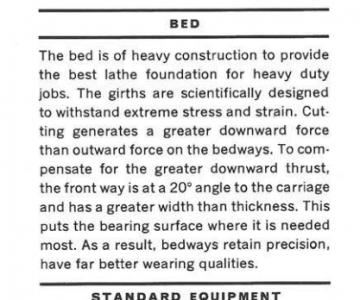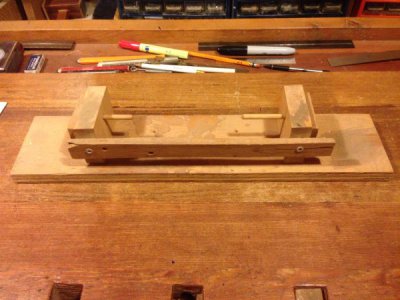- Joined
- Mar 15, 2019
- Messages
- 708
I think it is a matter of compromises. If you were to design the ideal lathe, you would want rigidity in buckets. Think about having a need to make 1 part a million times. You could and likely would design a machine dedicated to that single part. Let's say that part is a bolt and for the sake of the exercise, that you couldn't make the bolt any other way. It would need so much power and any extra would be wasted. It would need a lot of rigidity so it would be heavily built. Ideally, the tool holder would be mounted with the range of motion needed to create the piece and all other aspects of it would be built for rigidity and nothing else. It would likely be mounted in a far more rigid fashion than resting on rails with a piece of iron bolted onto the bottom acting to keep it from moving in any direction but that required to complete the part.
You would likely end up with a machine that is recognizable as a lathe only vaguely. But it really would be a lathe at heart.
Now imagine you need to build a different part. Larger, smaller, even with a different thread pitch. You would need a whole new machine to do it. For someone making a million of the same thing, a new dedicated machine might make sense.
But if you aren't making a million of anything and need to make all sorts of parts using the same machine then you start making compromises. Bigger, smaller, etc. Everything is a trade off.
You would likely end up with a machine that is recognizable as a lathe only vaguely. But it really would be a lathe at heart.
Now imagine you need to build a different part. Larger, smaller, even with a different thread pitch. You would need a whole new machine to do it. For someone making a million of the same thing, a new dedicated machine might make sense.
But if you aren't making a million of anything and need to make all sorts of parts using the same machine then you start making compromises. Bigger, smaller, etc. Everything is a trade off.



